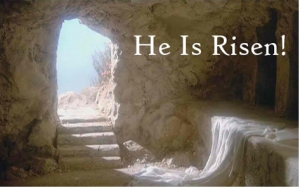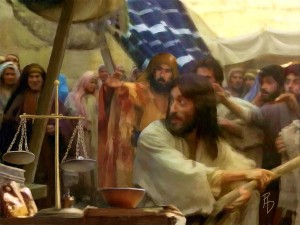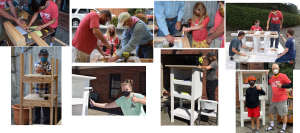“Beloved, let us love one another, because love is from God; everyone who loves is born of God and knows God. Whoever does not love does not know God, for God is love. God’s love was revealed among us in this way: God sent his only Son into the world so that we might live through him.”
– 1 John 4:7-9
Beloved of God,
Over and over again in the first of his three new testament letters, the Apostle John holds up the many-faceted diamond which is God’s love and describes it—and our relationship to it—in various ways. Addressing the community as his “Little children,” John speaks in fatherly tones both tender and strong about our calling to live our lives in the Light and Love of God. “God is love,” he writes, “and those who abide in love abide in God, and God abides in them…There is no fear in love, but perfect love casts out fear.” His words are simple, direct, and true. This the bedrock foundation of our lives of faith—trusting that God’s love is FOR US; trusting that we are children of God; trusting that God’s deepest desire and dream for us and for all is that we live our lives steeped—marinated—in this truth, and embody it in our life together!
In the second century milieu in which John writes, gnostic teachers vied among Christians for converts to their cause. Gnostic claims to perfection, denial of the significance of Jesus’ coming in the flesh, rejection of the saving power of Jesus’ death, and divisive preaching were all part of the gnostic teaching strategy. John writes to keep his community grounded amid the competing claims of Gnosticism. He writes to remind them of what is central; to help them regain their balance.
“By this we may be sure that we are in him: whoever says, ‘I abide in him,’ ought to walk just as he walked…whoever says, ‘I am in the light,’ while hating a brother or sister, is still in the darkness.”
In our own lives, as throughout the long history of human relationships, we regularly lose sight of this crucial revelation and its implications. Secondary commitments flood in from every quarter and push what should be central out to the periphery. LOVE—whose rightful place is at the center; LOVE—which is meant to take on flesh in our lives—is replaced by something else, and we start making distinctions about who is love-worthy, who deserves our—and God’s—love. When love is displaced, fear and judgment soon take its place. And it’s all downhill from there. As Jesus said to his disciples:
“It shall not be so among you.” (Mt. 20:26)
One of the commitments our congregation made in 2008 was to be a Reconciling in Christ congregation, i.e. publicly welcoming LGBTQ persons into the life and mission of the church. The welcome statement we approved reads:
Christ calls us to reconciliation and wholeness, in a world that can be filled with alienation and brokenness. In faithfulness to the Gospel and to our Lutheran heritage, we answer Christ’s call to be agents of healing and safety, particularly for people who have been marginalized by our society. As a Christian community, we invite all people to join us as we work to better understand the meaning of grace for our lives. We welcome people of all sexual orientations and gender identities into the life and mission of our congregation. – PLC welcome statement
In recent decades—and particularly over the past several years—awareness has been growing among some within the highest caste (i.e. among white folk) regarding how the historic CASTE system in our country has embedded inequality and injustice within American culture, as manifested in the systemic racism and white supremism that plagues us. Over the past few years in our adult Sunday forum group we have sought to educate ourselves about the attributes that accompany whiteness, about the experience of people of color in our society, and about the power that systemic racism exerts within our lives and communities. Now we are called to take the next step of embodying what we have learned, integrating it into our identity and mission. Not taking that step is not an option. For, as John writes, “Those who say, ‘I love God,’ and hate their brothers or sisters, are liars; for those who do not love a brother or sister whom they have seen, cannot love God whom they have not seen. The commandment we have from God is this: those who love God must love their brothers and sisters also.”[1]
Reconciling Works, the organization that helps to advocate and equip congregations for ministry particularly with LGBTQ community, has made a new commitment as an organization to racial equity, and they have invited us, as a Reconciling in Christ Congregation, to join them. This commitment on the part of Reconciling Works has implications for the way we, as a congregation, move forward. We are being invited to enter into specific commitment to justice and inclusion, in this case, naming our commitment to racial equity and/or antiracism within a revised welcome statement. (The framing of this commitment can be found HERE.) The question now before us is: How can we take the next step of translating what we’re learning into action? The time has come to gather a group of people from among us who will lead our congregation in exploring and enacting the invitations delineated by Reconciling Works, and the Task Force for Authentic Diversity. I am looking for partners who feel called to participate and help guide this effort within our congregation. Please let me know if you are one of those persons.
With you on the Way,
Pastor Erik
[1] 1 John. 4:20-21







